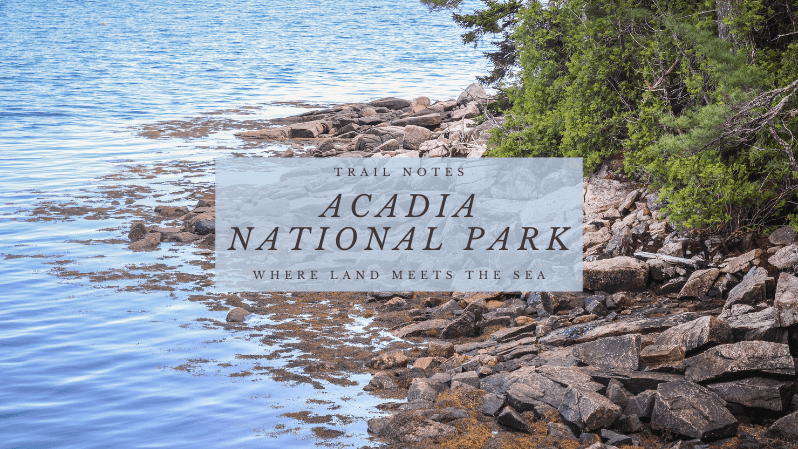Nestled along the rugged coast of Maine lies Acadia National Park, a gem of the national park system. Spanning over 49,000 acres, Acadia is a land of natural wonder where the mountains meet the sea. With a diverse array of ecosystems, this park offers visitors the opportunity to explore an ever-changing landscape that is both breathtaking and awe-inspiring.

One of the main draws of Acadia is the park's rugged coastline. Carved by the forces of nature, the shoreline is a stunning blend of cliffs, beaches, and coves. For visitors looking for adventure, there are many opportunities to explore the coast on foot, by bike, or even by boat. The park's famous carriage roads, a system of over 45 miles of carriage trails, are perfect for exploring the park's interior and offer a unique way to experience the park's diverse ecosystems.
Acadia National Park is also home to Cadillac Mountain, the highest point on the Eastern Seaboard. A popular destination for visitors, the summit offers unparalleled views of the park and the surrounding Atlantic Ocean. With a 360-degree view of the coastline, visitors can witness both the sunrise and the sunset from this stunning vantage point.

In addition to its natural beauty, Acadia National Park has a rich history that is worth exploring. The park was established in 1916 as the first national park east of the Mississippi River, and its history is intertwined with the people who have called this area home for thousands of years. The park offers visitors the opportunity to explore historic sites, such as the Abbe Museum and the Jordan Pond House, both of which offer a glimpse into the rich cultural heritage of the area.

For those looking to immerse themselves in the park's natural beauty, there are a variety of outdoor activities to choose from. Whether you want to hike, bike, paddle, or climb, Acadia National Park has something for everyone. With over 120 miles of hiking trails, visitors can explore the park's diverse landscapes, from rugged mountains to peaceful forests. The park is also home to a variety of wildlife, including moose, black bears, and bald eagles, making it a popular destination for wildlife enthusiasts and photographers.
To make the most of your visit to Acadia National Park, it's important to plan ahead. The park offers a variety of camping options, including front-country, backcountry, and RV camping. However, be sure to reserve your spot in advance, as camping can fill up quickly during peak season.
If you're looking for a unique way to experience the park, consider taking a guided tour. Acadia offers a variety of ranger-led programs, including hikes, boat tours, and campfire programs, all designed to help visitors learn more about the park's natural and cultural history. And for those looking for a challenge, the park's rock climbing and bouldering opportunities are not to be missed.

One of the best ways to experience Acadia is by bike. The park's carriage roads, built by philanthropist John D. Rockefeller Jr. between 1913 and 1940, offer a unique way to explore the park's interior. With no cars allowed, visitors can bike or hike along the smooth, crushed-gravel paths and take in the stunning views of the park's lakes and mountains.
Finally, no visit to Acadia National Park is complete without sampling some of the local cuisine. The park is home to several unique dining options, including the Jordan Pond House, which has been serving up popovers and tea since 1895. Be sure to try some of Maine's famous lobster, which can be found at many of the local restaurants and seafood shacks

As a final note, it's important to remember that Acadia National Park is not only a beautiful destination, but also a vital ecosystem that needs our protection. The park's delicate ecosystems are vulnerable to human impacts, and it's up to all of us to minimize our impact and help preserve this natural wonder for future generations.

When visiting the park, be sure to follow the Leave No Trace principles, which include packing out all trash, staying on designated trails, and respecting wildlife and natural features. Additionally, consider making a donation to one of the park's many conservation organizations to help ensure that Acadia National Park remains a healthy and vibrant ecosystem for years to come.
And don't forget to take plenty of photos to remember your trip to Acadia National Park! The park's breathtaking scenery and diverse wildlife make for some incredible photo opportunities. Whether you're capturing the sunrise over Cadillac Mountain, hiking through the autumn foliage, or spotting a moose in the wild, you'll want to have your camera at the ready.

But it's important to remember that we have a responsibility to protect the park's natural beauty, even in our photography. When taking photos, be sure to follow park guidelines and stay on designated trails and viewing areas. Avoid disturbing wildlife or natural features in order to get the perfect shot. And when sharing your photos on social media or other platforms, be sure to use the hashtag #AcadiaNationalPark to help spread awareness and appreciation for this incredible destination.
Further commemorate you time at this beautiful park by grabbing your own Acadia National Park collectible challenge coin from the Walkabout Collection's National Park Series.

In conclusion, Acadia National Park is a true national treasure. With its rugged coastline, diverse ecosystems, and rich history, it offers visitors a unique and unforgettable experience. Whether you are a seasoned hiker, a wildlife enthusiast, or just looking to relax and enjoy the beauty of nature, Acadia National Park has something for everyone. So pack your bags and head to Maine to experience this natural wonder for yourself.


0 comments